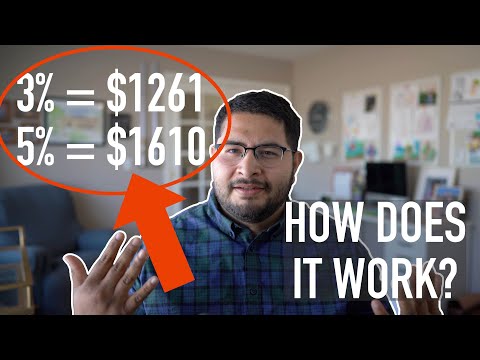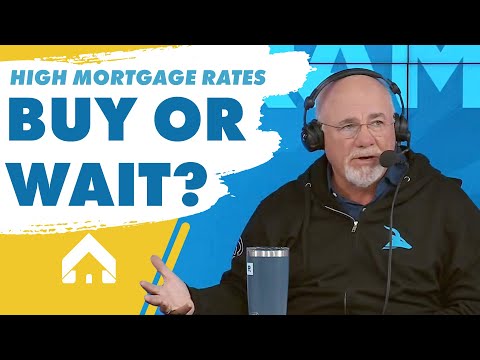Decoding What Are Mortgage Interest Rates and Their Significance
What are mortgage interest rates, you ask? Well, they’re much more than just a percentage printed next to your monthly payment. These rates are like the heartbeat of the housing market, constantly ebbing and flowing with the economy’s health. Here in 2024, understanding what are mortgage interest rates is like holding a crystal ball that can peek into the financial future of homeownership.
The economic factors influencing mortgage rates in 2024 are numerous. From inflation to employment rates, to even international conflicts, it’s a bit like a complex dance of numbers and predictions. Think of it this way: when the economy’s doing the cha-cha, interest rates might spike as investors look for higher returns. On the flip side, a slow waltz might see them fall, tempting more folks to jump into the housing market.
Fixed-rate vs. Adjustable-rate mortgages: when choosing between these two, consider this – do you like the comfort of knowing exactly what you’ll pay each month for the life of your loan? Then fixed-rate’s your jam. But if you’re willing to gamble on rates potentially decreasing in the future, then adjustable-rate mortgages might be up your alley.

Historical Perspective: How Today’s Mortgage Interest Rates Compare to the Past
Reflecting on the past decade, from 2014 to 2024, mortgage rate trends have had more ups and downs than a rollercoaster at an amusement park. Remember when we thought rates below 4% were the new normal? Fast forward to today, and we’re looking at rates closing in on 7.12% for a standard 30-year fixed mortgage!
Historical shifts like the one we’ve experienced often have deep economic triggers – think major policy changes or global events that send shockwaves through financial markets. Keeping an eye on these triggers can often give us a glimpse into future trends.

| **Topic** | **Details** |
|---|---|
| Current 30-Year Fixed Rate | 7.12% on Saturday, March 02, 2024 |
| 30-Year Fixed Refinance Rate | 7.10% on Saturday, March 02, 2024 |
| Rate Trend Implications | Rates have been volatile but remain high; influences affordability & loan amount |
| Impact on Borrowing Power | Higher rates mean lower borrowing power; Lower rates increase borrowing capacity |
| Example Payment Calculation | On a $100,000 mortgage at 6%, monthly payment = $599.55 ($500 interest + $99.55 principal) |
| Considerations for Homebuyers | |
| – Consider locking in a rate if lower rates are available | |
| Refinance Considerations | |
| – Evaluate costs of refinancing vs. benefits of lower payments | |
| Economic Impact | |
| – Affects home prices as buyers’ affordability decreases | |
| Historical Perspective | 7.12% is higher compared to historical lows post-2008 financial crisis |
| Advice & Strategy | |
| – Explore government-backed loans which might offer lower rates | |
| Additional Factors | – Credit score, down payment, loan amount, and term affect personal mortgage rate |
| Rate Locks | – Consider locking in a rate to avoid further increases especially in volatile markets |
The Ripple Effects of Mortgage Interest Rates on the Housing Market
Now, let’s chat about mortgage rates’ influence on buyer demand and housing supply. When rates are low, it’s like a housing market happy hour – everyone wants a piece of the action. Conversely, when rates climb, potential buyers might get cold feet, causing a bit of a chill in the market.
In bustling cities like New York, San Francisco, and Dallas, varying mortgage rates have played out like a drama series, reshaping neighborhoods and flipping market hotspots on their heads. Think of that swanky uptown district that suddenly went from “I have to live there” to “I can’t afford to live there.”

Understanding the Direct Impact of Mortgage Interest Rates on Monthly Payments
Let’s break it down with some math. Suppose you snag a $100,000 mortgage at 6%. Your monthly hit for principal and interest would be around $599.55 – not too shabby, right? But even a slight uptick in rates can send that number climbing faster than a squirrel on an oak tree.
Imagine waving goodbye to more of your hard-earned cash purely through interest. It’s not just a monthly burden – over time, the extra amount you’ll fork over could be enough to bankroll a serene retirement or a world tour.

Mortgage Interest Rates and Their Influence on Refinancing Trends
Refinancing can sometimes feel like stepping out of a pair of tight shoes and into some comfy slippers. When interest rates take a nosedive, it’s like the market’s giving you a wink and saying, “Hey, want to save some cash each month?” Homeowners who pounce on these drops, like when Ann Nesby hit those high notes, can often find themselves grinning all the way to the bank.

How Mortgage Interest Rates Affect Different Types of Borrowers
First-time homebuyers often watch rates like a hawk, knowing that a gentle nudge downward could unlock the door to their new home. On the flip side, investors looking at rental properties might see higher rates like a green light to negotiate better purchase prices.
And for those looking to downsize, it’s all about timing. Lower rates might be the perfect nudge to swap the old family homestead for something a bit more snug, with a lower monthly payment to boot.
Interest Rates and Government Policy: Analyzing Federal Reserve Actions
Like a conductor with a baton, the Fed wields its power to set the rhythm of our economy. Their decisions on interest rates can either have us waltzing or scrambling to keep up with the beat. A case in point – their rate decisions of 2023 have had us all tuning our financial instruments to stay in harmony with the market’s melody.
Global Economic Shifts and Their Impact on Mortgage Rates
Ethnic tensions on the other side of the world? They might seem distant but can cause ripples that nudge up interest rates right in your neighborhood. Global events can be the butterfly effect on steroids, with seemingly isolated incidents causing interest rates to samba in unexpected ways.
Preparing for Future Fluctuations: Strategies for Prospective Home Buyers
Future home buyers, sharpen those pencils and get ready to do some homework. You’ll want to analyze market trends as if you were preparing for the final exam. It’s about reading between the lines of economic forecasts and budgeting for the unexpected – because when it comes to interest rates, the only constant is change.
Innovative Financial Products in Response to Mortgage Interest Rate Variability
Lenders, seeing the writing on the wall, have started to roll out nifty products designed to hedge against rate hopscotch. Hybrid loans, like Fixed-period ARMs, offer a taste of stability with a dash of flexibility, aiming to give borrowers peace of mind despite the market’s acrobatics.
Conclusion: The Dynamic Landscape of Mortgage Interest Rates
From the macro-level influences that feel like they’re from another planet, down to the dollars-and-cents impact you can feel in your wallet each month – mortgage interest rates are a complex beast that demands respect and attention.
The importance of staying informed and adaptable is like keeping your eye on the ball in a high-stakes game. Whether you’re a first-time buyer or seasoned investor, one thing’s certain: What are current mortgage rates, What are home interest rates right now, and What are house interest rates today are questions that deeply affect us all.
So, looking ahead, potential borrowers should be as nimble as a cat burglar, ready to pounce on opportunities and mitigate risks. After all, today’s mortgage interest rates aren’t just small talk – they’re the linchpin of your financial future.
What Are Mortgage Interest Rates And Their Fascinating Impact?
When we talk about the ins and outs of what are mortgage interest rates, we’re dipping our toes into a pool as vast as Fozzie Bears joke book. Interest rates aren’t just dry financial figures; they form the lifeblood of the home-buying process, just as vital as the foundation that holds up your dream home. Picture yourself trying some intense short head Bicep Exercises; just as your biceps are integral to lifting, mortgage interest rates are crucial in determining how much you’ll hoist in payments over the years.
Now, here’s a little nugget of trivia that might tickle your funny bone: Believe it or not, mortgage interest rates have been on a roller coaster ride over the past several decades, not unlike the ups and downs in the career of Soleil Moon frye. In the early 1980s, interest rates were sky-high, soaring above 18%. Can you imagine? It was like paying for an exclusive NC 17 movie at kid’s matinee prices – not exactly what you’d expect or budget for.
But buckle up, because that’s not where the story ends. Just as Fozzie Bear’s success wasn’t only about his wacka-wacka catchphrase, the historical shift in mortgage interest rates isn’t about the peaks alone. By the time the 2000s came around, rates had plummeted, making home ownership as achievable as finally nailing those bicep peaks with the perfect short head bicep exercises regimen. These twists and turns in the financial world impact everyone – whether you’re refinancing a beachfront property or buying your first studio flat.
In the same way that risqué NC 17 Movies are known to push boundaries, so too did the bold drops in interest rates in the years following the 2008 financial crisis. They prompted many to leap into homeownership or refinance existing mortgages. Fast-forward to today, and mortgage interest rates have become as central to home buying conversations as talk of celebrity mishaps is to pop culture aficionados – not always predictable, but undeniably fascinating.

What is mortgage interest rate right now?
– Hold onto your hats, folks, because as of Saturday, March 02, 2024, the mortgage interest rate game is showing a bit of a wild ride! If you’re in the market right now, the average interest rate for a 30-year fixed mortgage is sitting pretty at 7.12%. So yup, you’ll want to keep a keen eye on those numbers; they’re a-changin’!
What is the average 30 year fixed mortgage rate?
– Talking turkey, the average 30-year fixed mortgage rate as we speak—or as I write—is 7.12%. It’s what the crystal ball reads for today, so if you’re shopping around, that’s the number to beat!
What interest rates are mortgages?
– When you ask about mortgage interest rates, you’re really dipping into a mixed bag! But since you’re curious, a 30-year fixed mortgage is going for about 7.12%, while its refinancing cousin is a smidgen lower at 7.10%. Remember, though, these babies fluctuate faster than a rabbit on a hot date.
What does 6% mortgage rate mean?
– Alright, so a 6% mortgage rate—what’s the deal, right? This means if you take out a $100,000 loan, your monthly payment will be around $599.55; that’s $500 paying off interest and a skinny $99.55 chipping away at the principal. In plain English, it’s not just the sticker price—you’re also forking over cash for the privilege of borrowing.
Are mortgage rates expected to drop?
– Are mortgage rates expected to drop? Well, my crystal ball’s a little foggy, but experts have been chin-wagging about this and seem to think “not so fast.” They’ve been stubbornly high and look to be sticking around for a spell.
Why are mortgage rates so high?
– Why are mortgage rates so high, you ask? Picture this: the economy’s doing its tango, and when it gets too hot, rates jack up to cool things down. Basically, they’re like the bouncers of the financial world, keeping the party from getting out of hand.
Will mortgage rates ever be 3 again?
– “Will mortgage rates ever be 3 again?” you ponder wistfully. While we’d all love a time machine to those golden days, current whispers in the wind say, “Don’t hold your breath.” We’re in a new normal, and those low, low rates might just be hazy memories.
Are interest rates going down in 2024?
– As for interest rates going down in 2024, I’d say don’t bet the farm on it. While there’s always room for surprises, the trend is more roller coaster than smooth sailing. So maybe buckle up instead of counting those unhatched chickens.
What is the lowest mortgage rate in history?
– The lowest mortgage rate in history? Now you’re digging deep! Records show we hit rock bottom back when 15-year fixed rates dipped their toes below 3%. Those were the days, huh? But hey, don’t get too misty-eyed; the market’s a beast of its own!
What will mortgage rates be in 2024?
– Casting an eye towards 2024, predicting mortgage rates is a bit like reading tea leaves. They could swing high, dip low, or hang tight. As it stands, expecting them to mellow out might be wishful thinking. But here’s to hoping, right?
Which bank is best for property loan?
– On the prowl for the best bank for a property loan? That’s a hot topic. The truth is, “best” is in the eye of the beholder—or the borrower, in this case. You’d wanna shop around; compare rates, fees, and service. It’s like finding the perfect pair of jeans—you’ll know it when you feel it.
Are mortgage rates really high right now?
– Are mortgage rates really high right now? Let me tell ya, compared to the glory days of sub-3%, today’s rates—hovering over 7%—feel like a cold shower. But hey, everything’s relative, and historically? It’s not the craziest we’ve seen.
How much is a $400,000 mortgage at 6?
– If you’re crunching the numbers on a $400,000 mortgage at 6%, here’s the scoop: your monthly payment for principal and interest would be about a cool $2,398.20. It’s a hefty chunk of change, enough to make your wallet wince.
Is 7% a bad mortgage rate?
– Is 7% a bad mortgage rate? It’s all about perspective! Not too long ago, 7% might’ve seemed like daylight robbery, but compared to some historical highs, it’s not the worst party guest. Still, let’s not sugarcoat it—it’s not what our wallets are dancing about.
What happens if I pay 2 extra mortgage payments a year?
– And finally, what happens if you throw a couple of extra payments at your mortgage each year? Well, butter my biscuit, you’re onto something smart! It’s like giving your loan a turbo boost, potentially shaving years off your mortgage and saving a pretty penny on interest. High five to financial savvy!



